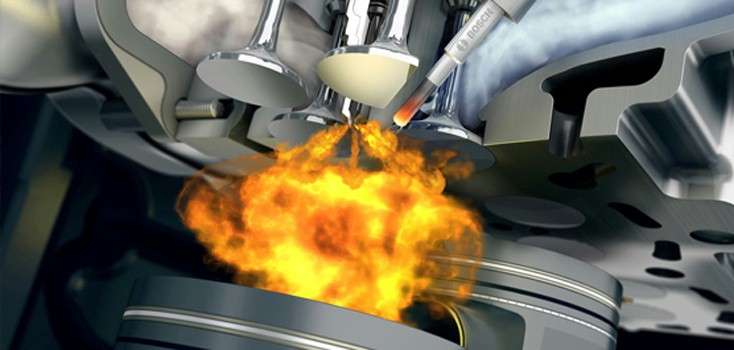Recent Articles
Popular Makes
Body Types
What Is Direct Injection?

Direct Injection is a way of spraying fuel directly into the engine’s combustion chamber at high pressure. In the old days a carbureter was used to meter and mix the air and fuel entering the engine. The fuel was pumped into the engine at a low pressure (up to 9 or 12 psi) and was basically carefully poured into the engine by the carburetor. The carburetor was eventually replaced by single point fuel injection, where a single fuel injector (usually mounted in the intake manifold or throttle body) was used to spray a mist of fuel into the air stream. These systems often run at a slightly higher pressure than a carburetor, usually around 15 to 40 psi.
In the last few years most cars have used an individual fuel injector for each cylinder, mounted in the intake manifold. This allows for more accurate fuel control to each bank and and runs at a higher pressure (up to around 100 psi) to promote better mixing of the air and fuel. In all three of these systems the fuel must be injected while the intake valves are open, because the fuel is mixed with the air before it goes through the valves and reaches the combustion chamber. If the fuel were injected at any other time, it would simply pool in the intake manifold.
Some recent gasoline cars (and almost all diesels) use direct injection. In this system, only air flows past the intake valves and the fuel is injected directly into the combustion chamber at high pressures, up to 2,900 psi. The result is a swirl effect and improved combustion chamber cooling, allowing for higher compression ratios. As the compression ratio is increased engine efficiency also goes up, leading to improved fuel economy and more engine power. Direct injection also works well with forced induction engines, such as those fitted with turbochargers or superchargers.
Because the gasoline is injected directly into the combustion chamber, fuel can be injected at any time. When there is little load on the engine it can be run extremely leanly, saving fuel and reducing emissions. In order to prevent detonation the fuel is not injected during the normal intake stroke, but instead late in the compression stroke. The result of all this is fuel economy up to 15% better than with traditional fuel injection, 5% more torque (especially at lower RPMs), and better throttle response.